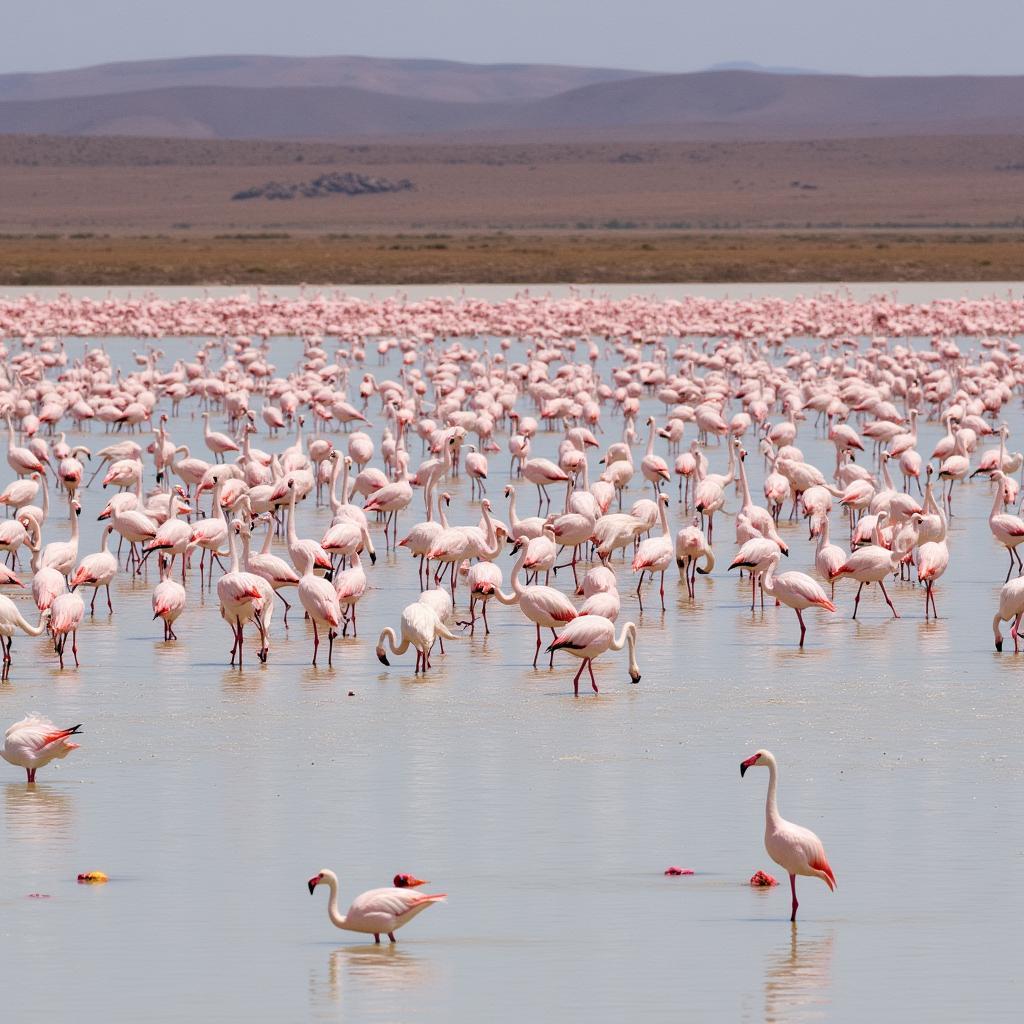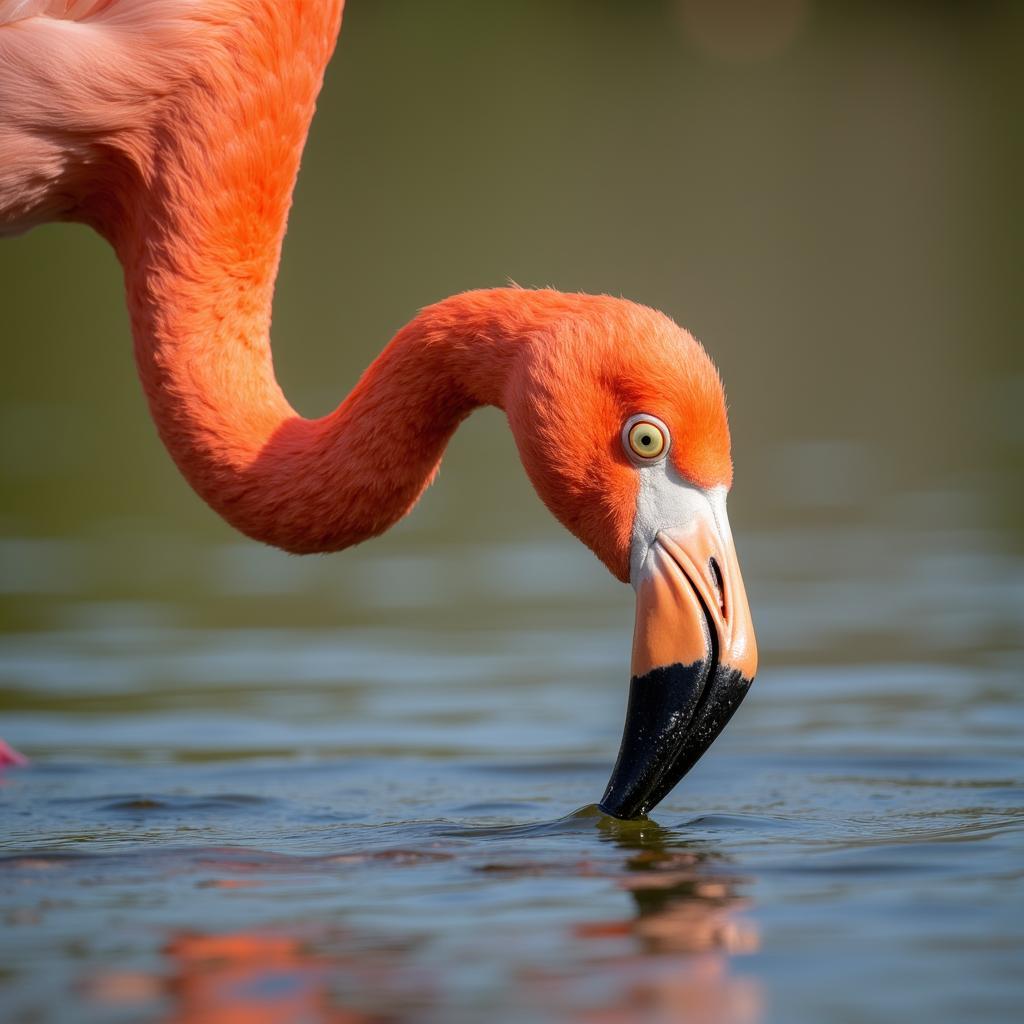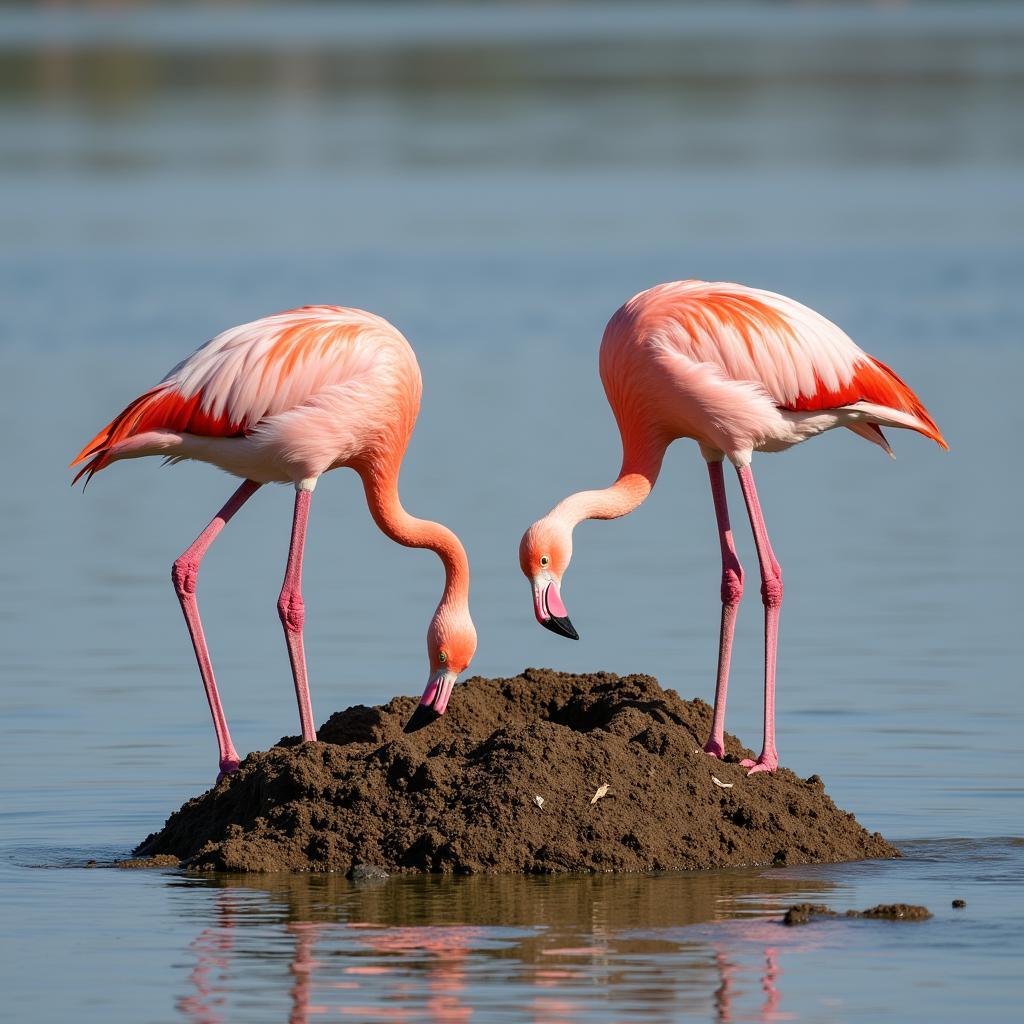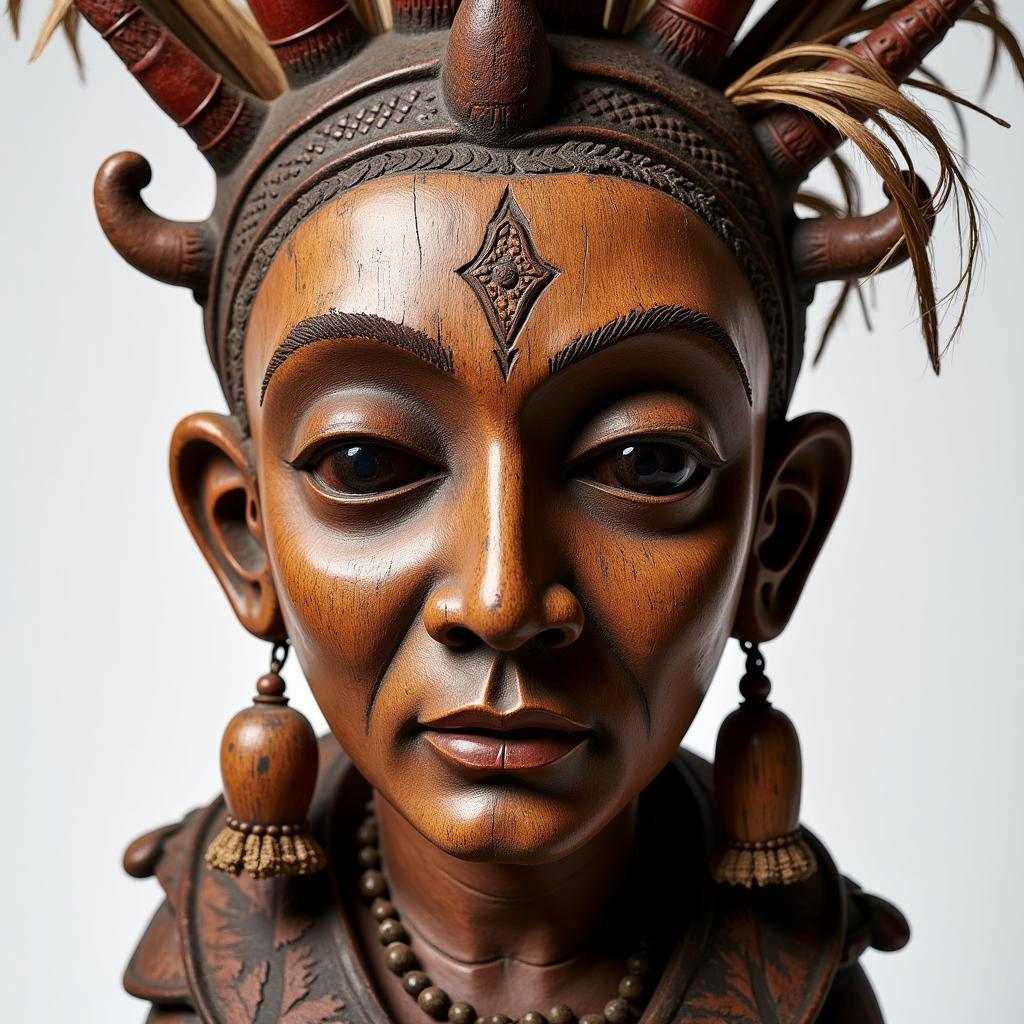The African Flamingo: A Splash of Pink in a Vibrant Continent
The African Flamingo, a striking symbol of African wildlife, paints a vivid picture across the continent’s diverse landscapes. Known for their vibrant pink plumage and elegant stature, these fascinating birds captivate the imagination and offer a glimpse into the intricate ecosystems they inhabit.
A Closer Look at the African Flamingo
The African flamingo, scientifically known as Phoenicopterus roseus, stands as the most widespread flamingo species in the world. They grace numerous regions of Africa, from the salt pans of Namibia to the shallow lakes of East Africa. Their striking pink coloration, derived from their diet of algae and crustaceans, sets them apart as a true icon of the African wilderness.
Habitat and Distribution
 African Flamingo Habitat
African Flamingo Habitat
These adaptable birds thrive in a variety of wetland habitats, showcasing their resilience to harsh environments. They favor alkaline or saline lakes, lagoons, and coastal mudflats, where their specialized beaks, acting as filters, efficiently extract their food. Their distribution spans a significant portion of sub-Saharan Africa, including countries like Kenya, Tanzania, Botswana, and South Africa.
Diet and Feeding Habits
 African Flamingo Feeding
African Flamingo Feeding
Their vibrant pink feathers directly correlate to their diet, rich in carotenoid pigments. These pigments are found in the algae and small crustaceans that form the core of their diet. Using their uniquely adapted beaks, African flamingos filter-feed, sifting through water and mud to capture these tiny organisms. This feeding behavior not only sustains them but also contributes to the health of their wetland ecosystems by controlling algal populations.
Social Creatures with a Complex Social Structure
African flamingos are highly social animals, often congregating in large flocks that can number in the thousands. These massive gatherings offer numerous benefits, from enhanced foraging efficiency to increased protection from predators. Within these flocks, complex social structures emerge, with individuals forming strong bonds and engaging in elaborate courtship displays.
Breeding and Nesting
 African Flamingo Nesting
African Flamingo Nesting
Breeding season for African flamingos often coincides with the rainy season, when water levels are high, and food is abundant. During this time, the flocks transform into bustling breeding colonies, with pairs engaging in synchronized courtship displays. Nests, built from mud, are constructed on slightly elevated ground to protect eggs from flooding. Both parents share incubation and chick-rearing responsibilities, demonstrating a strong parental bond.
Threats and Conservation
Despite their wide distribution, African flamingo populations face various threats, primarily from habitat loss and degradation. Human activities, such as water diversion for agriculture and pollution from industrial and agricultural runoff, pose significant challenges to their survival.
The Importance of Conservation
Conserving African flamingos and their wetland habitats is crucial not only for their own survival but also for the health of entire ecosystems. Their presence signifies a healthy and balanced environment. By protecting their habitats, we contribute to the well-being of countless other species that depend on these vital wetlands. Organizations like BirdLife International and the IUCN play a vital role in monitoring populations, identifying threats, and implementing conservation measures to protect these iconic birds for generations to come.
Fascinating Facts About African Flamingos
- Did you know that the pink coloration of African flamingos can vary in intensity depending on their diet?
- These birds are strong fliers, capable of covering long distances, sometimes even crossing continents during migration.
- African flamingos can live for several decades, with some individuals reaching up to 50 years of age in captivity.
Exploring More of Africa’s Wildlife
If you’re interested in learning more about the fascinating creatures that inhabit the African continent, be sure to check out these articles:
Conclusion
The African flamingo, with its vibrant plumage and intriguing behaviors, stands as a symbol of Africa’s rich biodiversity. Understanding these remarkable birds and their vital role in the ecosystem highlights the importance of conservation efforts to protect them and their fragile habitats. By learning more about the African flamingo, we gain a deeper appreciation for the interconnectedness of life on Earth and the importance of preserving its wonders for future generations.
Need help planning your African safari adventure?
Contact us:
- Phone: +255768904061
- Email: kaka.mag@gmail.com
- Address: Mbarali DC Mawindi, Kangaga, Tanzania
Our dedicated team is available 24/7 to assist you.


